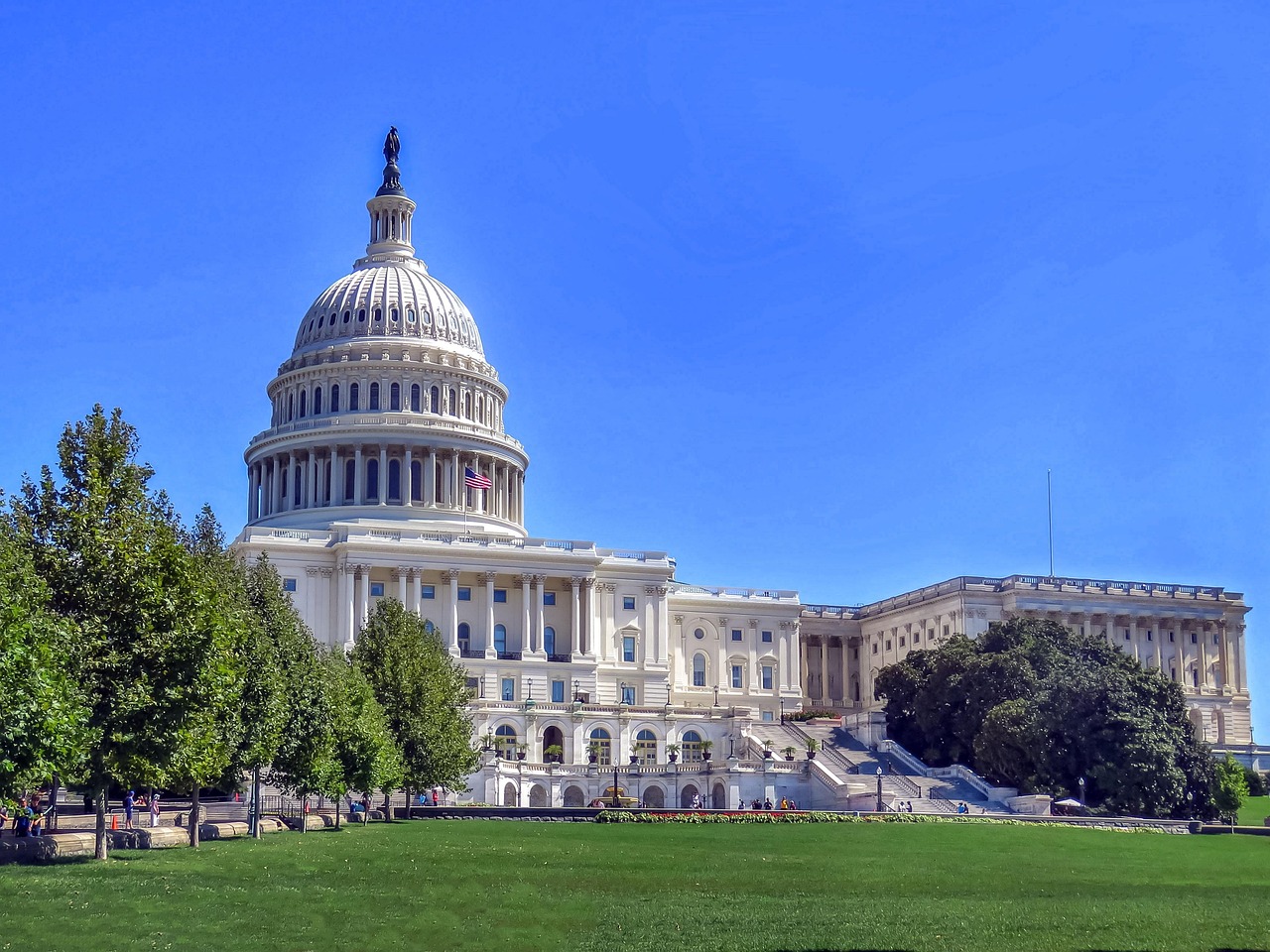As we are all painfully aware, Congress has passed Trump’s signature bill act known lovingly as One Big Beautiful Bill Act (the Act), but it’s not a bill anymore is it?
Within the Act there are provisions affecting both Medicaid funding as well as Medicaid eligibility, meaning total dollars coming from the federal government to the states will decrease as will the number of patients for whom Medicaid will pay. Next, we will dive into some of those changes, some say better than anyone else—probably better than the Act itself.
State Supplemental Payment Programs
Overview: Medicaid funding is comprised of both State and Federal tax dollars. Essentially, the federal government pays a state a “match” for every dollar spent administering the Medicaid program in their state. The match paid depends on the state: states with higher income residents have a lower match, while lower income states have a higher match. For example, if Idaho spends a dollar, the federal government sends them $2.09 (2025 rates per KFF). Meanwhile, if Washington spends a dollar, the federal government sends them $1.
State supplemental payment programs are a method by which the State taxes healthcare providers and uses those tax funds to draw down additional federal funds. Generally, both the taxes paid and the federal matching funds (minus the cost to administer the program) are distributed back to the providers. Thus, in the case of Idaho, the $1 tax draws down $2.09 of federal funds ($3.09 in total); the Washington tax draws down $1 ($2 in total). Those additional funds are then distributed to the various facilities.
The reason for these programs is the chronic underfunding of Medicaid as a whole.
One of the requirements to these programs is that a state cannot “hold harmless” a facility (i.e., promise they will get all of their taxes back). The statute calls for a two-prong test to ensure compliance with the “hold harmless” provision. One of the prongs is a cap on the amount of tax levied; currently, this cap is 6% of total net patient service.
Incoming change: The Act disallows State’s from levying new taxes or expanding current taxes.
Beginning in 2028, the Act requires states with expanded Medicaid to decrease the cap on taxes by half a percent a year until the cap hits 3.5%.
For states that did not expand Medicaid, there is no change to the cap—but they are subject to the “no new or expanded tax” part of the rule.
Nursing home supplemental programs are exempt from these decreases in both expanded and non-expanded states.
Hey! What does this mean to my hospital?!? Hospitals can expect the current level of supplemental payments to decrease (#captainobvious). For DSH hospitals (specifically state DSH–the fun DSH surveys you put together for the state), this translates to a higher probability of receiving state DSH monies again. Since the application for DSH funds (depending on the state’s process) is a year or two before the DSH year, hospitals will want to ensure they are back to diligently requesting said funds. Further, the state DSH shortfall calculations include both uninsured and Medicaid costs, and since it is well known to all (including those that started reading towards the end of this big beautiful article), the number of uninsured people is estimated to increase. Therefore, while DSH eligible hospitals should see additional DSH funds, the total DSH pool of funds is set to decrease by $8 billion starting in 2026.
State-DSH eligible hospitals, should ensure they are applying and at least getting their share of these funds, even if currently you are not receiving any payments or have been subject to paybacks in the past.
My guess is we are losing millions in supplemental payments and hoping to get back our $10,000 to $300,000 of DSH. That’s based on estimations rolling around in my head—no hard data, but generally the scope.
State-Directed Payments
Overview: For states that have turned over their Medicaid programs to be managed by insurance companies, there is a fun program referred to as State-Directed Payments. This is similar to the above supplemental payment programs, but is, well, different.
Essentially, the states direct the managed care companies on what to pay.
This program comes with a cap of average commercial rates in the state (side note, the upper payment limit for supplemental payments is limited to what Medicare would have paid for the services in the state in the aggregate).
Incoming change: The Act changes the payment limit from commercial rates to either 100% of Medicare rates (if an expansion state) or 110% of Medicare rates (if in a non-expansion state).
For states that are currently paying over the new caps, they are required to decrease payments by 10% a year starting in 2028 until they are in compliance with the new caps.
Nursing or intermediate type facilities are not exempt from this rule (like the state supplemental payment program explained above). Instead, their cap would be the payment rate in the Medicaid state plan (e.g.: since Medicare doesn’t pay for non-skilled nursing home care, no rates are available).
The “hey, what’s this mean to my facility” matches the analysis above: make sure you are applying for DSH funds. They will not cover the decrease, but you are more likely to qualify again. Assuming you qualify, of course.
Medicaid Eligibility Look Backs
Overview: When a patient applies for Medicaid coverage, that coverage can retroactively cover 90 days prior to the application date—that is the federal rule, though some states have stricter timeframes in place.
Incoming change: The Act changes the federal rule of how many days can be retroactively covered. If you are applying as an adult under Medicaid expansion, the look-back period can only go back one month. For all other Medicaid enrollees (like SSI beneficiaries, pregnant women, and children), coverage can be retroactive for up to two months from the date of application.
For context, when a patient presents to your hospital as uninsured and you are working to get their stay covered by Medicaid (e.g., they qualify but just haven’t registered), we will need to be quite quick in helping them apply.
How will this affect my organization? This change will result in fewer verified Medicaid days for PPS hospitals, and fewer Medicaid days for hospital’s state DSH calculations.
It will also shift payment from Medicaid to the uninsured patient for these claims.
Hospitals will want to be proactive in helping folks get registered for Medicaid and, as you will read later in this article, be proactive in helping folks stay registered.
Therefore, for hospitals eligible for state DSH payments, this change will likely both increase and decrease your potential payment.
Rural Heath Transformation
This is a new program authorized through the Act. It is important to note it is not meant to cover the losses related to Medicaid funding and eligibility, but rather the intent is to transform the Medicaid program.
Beginning in 2026, and for a 5-year period thereafter, there will be $50 billion allotted to this program and those funds will be equally available per year (e.g., $10 billion a year).
States are responsible for requesting funds for their state. The applications are both due to CMS and must be approved by CMS by December 31, 2025—okay, those dates just struck me as funny—I’m very certain CMS will let states know they need applications earlier than that date so they can meet their statutory deadline. Anyhow, states will need to react quickly.
To receive these funds, states must devise and submit a “detailed rural health transformation plan,” There are eight priorities in the Act, but generally, it discusses access to healthcare for rural residents, including stabilization of rural facilities and access to fancy new technology meant to help manage chronic diseases.
Additional guidance will need to come from CMS. But all states who apply will equally split 50% or $5 billion worth of those funds. There are a couple of fully urban states I’m told, so I am eager to see what they come up with!
The remaining 50% is distributed according to a forthcoming CMS plan with, of course, certain considerations. What are they supposed to consider? Things like the percentage of the state that is rural, the state’s percentage of rural to total rural in the good ‘ol USA, whether there is a higher Medicaid utilization in that state, and whatever else CMS decides to add in. I’m not sure if you were feeling lucky today, but you can read this to say “there is another newsletter coming!!!”
The above plan must be used to carry out three or more of the following activities (not all-inclusive, there are a few others—just to keep you guessing):
- Prevention of and management of chronic disease
- Payments of items to healthcare facilities as denoted by CMS
- Technology for prevention of and management of chronic disease (at the consumer level)
- Training and technical assistance to rural hospitals for advanced technologies (like AI)
- Clinical recruitment
- Technical assistance
- “Right sizing” healthcare delivery system in rural communities
Oh—as far as the definition of rural for this program, it covers a lot of rural definitions, including (this also is not an all-inclusive list):
- Rural PPS rules including those reclassed to rural
- Critical access hospitals
- Sole community hospitals
- Medicare-dependent, small rural hospitals,
- Low-volume hospitals (e.g. you are receiving low-volume add on payments)
- Rural emergency hospitals
- Rural health clinic
- Federal qualified health centers
Good news for the states (and thereby you all): matching funds are not required to pull down these funds.
Finally, there is a 10% cap on what can be spent on administration of the program—not by you, but the state.
It is hard to say at this point, but we should have some idea by year end.
Other Medicaid Eligibility Changes
On the off chance you are still reading this—thanks, because we are still writing it, haha. Kidding! If you are still reading this, we clearly finished; point being, the rest will go a bit quicker, and we have put several of the changes to eligibility together.
Moratorium on Eligibility Rule: First up! The Act is reversing rules from a previous administration that were meant to streamline the application for Medicaid or the Medicare Savings Program by allowing Medicaid to rely on other organizations within the state government who had perhaps already verified certain criteria (like leveraging work done by those working with food stamps, for example). Moratorium is effective through September 30, 2033.
Proponents of this change argue it keeps folks off of Medicaid that do not qualify; contrarians say it adds cost to running these programs.
Reducing Duplicate Enrollment: Beginning January 1, 2027, states must have a process to regularly obtain addresses of Medicaid enrolled individuals from “reliable data” like the post office. And by the start of federal fiscal year 2030, states must submit, monthly, the SSN of those enrolled in Medicaid into a national registrar so CMS can check to see if there is an individual enrolled in two states and thereby disenroll said individual from the state not listed on the updated address.
Proponents of this (call them Pollyanna) hope this will also allow for easier verification of patient days; contrarians are who called me Pollyanna.
Why this matters is because many states have switched to having insurance companies administer their Medicaid programs. If an individual is enrolled in two states, that means two states are paying a per member per month amount to two insurance companies.
Ensuring Only Living Medicaid Beneficiaries And Providers: This section directs the states to review the Death Master File quarterly for deceased individuals beginning January 1, 2027. If one slipped through the cracks, the states are directed to disenroll said person. Kidding—the issue is less about dropping an individual off, but more about whether one snuck back on (i.e., stolen identity).
If the state finds the data was incorrect, they must immediately reenroll that person and coverage is retroactive to the date of disenrollment.
Starting January 1, 2028, the process for providers enrolling, reenrolling, or revalidating their enrollment, will now include running those folks through the Death Master File. Also, the Death Master File will be reviewed quarterly to ensure deceased providers are not shown as active providers.
For providers who are mistakenly disenrolled, there is not a similar provision to retroactively apply their enrollment. But states are directed to recover payments made after the provider’s death. This stipulation is super interesting, because it clearly was not the provider billing at that point but maybe, probably, someone stealing said NPI and committing fraud.
Eligibility Redeterminations: Adults insured under Medicaid expansion need to have their eligibility revalidated every 6 months (it was every 12 months). The Act directs CMS to tell us how this will work exactly.
Community Engagement Requirements: This is most commonly referred to as “work requirements.” The Act directs all states, effective end of calendar year 2026, to implement a plan to require adults to demonstrate 80 or more hours of work or community services a month in order to keep their coverage (or enrollment in an education program). Generally, this affects Medicaid expansion folks (not pregnant women, children, or the disabled).
Based on the paragraph above, these folks would need to provide proof of their community engagement every 6 months.
States cannot apply for waivers to this requirement, but Medicaid recipients in nursing facilities or psychiatric units can have the requirement waived while in these programs.
Compliance is to be noted at each determination or redetermination.
Cost Sharing: Medicaid expansion adults can also expect to see some cost sharing beginning in Federal fiscal year 2029. States are directed to charge up to $35 for adults with income over 100% and up to 138% of the federal poverty level. States can design their own amount, but it must be greater than $0 and no more than $35.
There is a per family cap equal to 5% of that family’s total income. So, for a family of three, that cap is between $1,333 and $1,839 in a year (5% of $26,650 and $36,777, respectively).
If services are provided at a rural health clinic, federal qualified health center, or certified community behavior health clinic, no cost-sharing is allowed.
Also exempted are emergency services, inpatient services, primary care, mental health, or substance use disorder services. Basically, cost sharing applies to nonemergency outpatient services, primary care, mental health, or SUD.
Alien Medicaid Eligibility: This portion defines who is eligible for Medicaid. It’s an interesting read, because most tout that it keeps illegal aliens from eligibility for Medicaid, but they (illegal aliens) were, in fact, already ineligible. But maybe with a defined list, we can stop fighting over it. Allowed, you ask?
- US citizens or nationals
- Lawful permanent residents
- Certain Cuban/Haitian entrants
- Individuals here under Compact of Free Association (three small island countries)
Essentially the newly ineligible are refugee types.
Emergency services are exempt from these changes, but the enhanced FMAP for providing that service ends October 1, 2026.
Parting Shots
Minimum Staffing Requirements: Do you remember the minimum staffing requirements rule for nursing homes? Well, that is no longer effective, and will not be through 2034.
Abortion: The Act effectively defunds clinics similar and very much exactly like Planned Parenthood for one year. It is important to note that abortions were already excluded from payment using any federal funds, but this rule says that if you provide abortions, you cannot bill Medicaid for any services (like normal clinic visits).
The significance of this is yet to be seen, but access to care for family planning services will shift, depending on location to either you all or the emergency room.
This part of the Act has already been challenged and we will see what the final outcome from the courts have to say.
Sequester: You know that 2% that comes off all of your Medicare payments? That is due to what is known as the PayGO budget rule that says you should figure out how to pay for your expenditures. It is a concept pulled out of a middle school home economics class. Essentially, when Congress passes a bill that is not budget neutral (very much like this one), it can trigger a sequester. So, while Congress never acted last time this came about, they might this time. It would be fun to have a couple of them running around!
Changes to Medicare
The Act requires a 2.5% increase to Medicare physician fee schedule payments for calendar year 2026. Seems refreshing after all of the cuts, so we put this at the end to conclude on a happy note.
Closing
If you have questions, please let me or your favorite DZAer know. We are here to help navigate changes.
Shar Sheaffer, CPA
Owner






